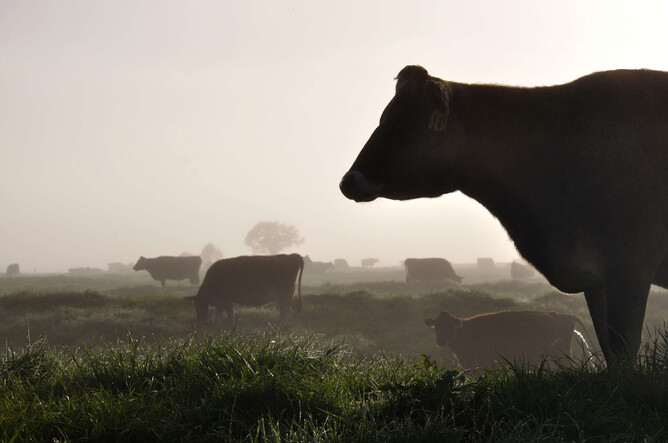We are already seeing an increase in nitrate toxicity in farms around Morrinsville with the recent overcast, wet weather, resulting in sudden death of livestock without warning.
Toxicity occurs when plants accumulate nitrates, which, when consumed, then overwhelm cattle’s rumen bacteria. Excess levels of nitrate are converted into nitrite in the rumen, which then leaks into the bloodstream and binds to haemoglobin, making it unable to transport oxygen. The cow essentially suffocates to death, despite being able to breath.
Signs of nitrate toxicity in livestock include:
Increased breathing rate;
Blue colouration of vulva or gums;
Unbalanced walking (cows look ‘drunk’) and muscle tremors;
Excessive drooling and frothing at the mouth;
Colic (abdominal pain) and scouring;
Down cows;
Sudden death of multiple animals in a mob;
Chocolate/dark coloured blood.
Some of the risk factors for excessive levels of nitrate include:
Rapid changes in climate. Periods of cold/wet changing into dry/warm conditions, or rainfall after drought conditions;
Overcast weather. Sunlight is needed to convert plant nitrogen into plant protein;
New grasses. Rapidly growing grass will uptake more nitrogen;
Over supplementation of pasture fertiliser (e.g. urea);
Supplementation of forage crops high in nitrogen (e.g. brassicas, such as kale).
Nitrate toxicity is an emergency and requires immediate veterinary treatment. Do not hesitate to call your vet if you suspect nitrate toxicity.
What can you do to prevent animal deaths from nitrate toxicity?
Test high risk pasture if you are unsure about its safety, especially following cold, overcast days. Continue to retest nitrate levels, as plant nitrogen levels can change dramatically depending on weather conditions.
Always check animals 1 hour after putting them on to new feed. Marginal pasture should only be grazed for 1 hour maximum.
Ensure cows are going onto pasture full (e.g. feed silage or meal first).
Graze crops during the afternoon and avoid night or morning grazing to enable more sunlight to convert plan nitrogen into plant protein.
Graze any forage crops for no more than 1-2 hours per day.
Limit the access of sick cows, or cows in poorer condition score, to crops, as these animals are more sensitive to elevated plant nitrates.
Do not apply nitrogen fertilisers to brassica crops within 6 weeks of starting grazing.

